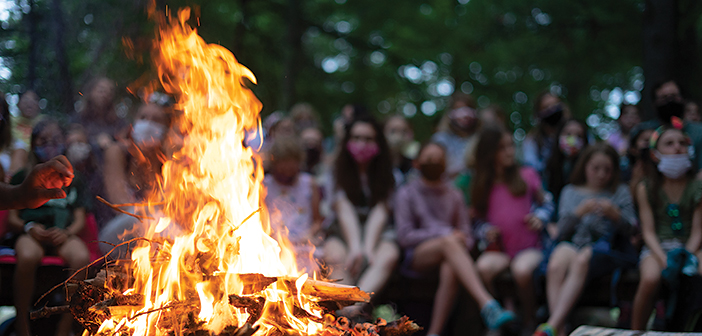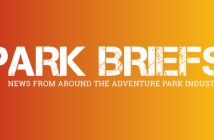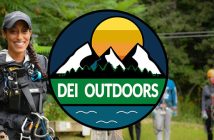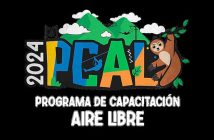On July 17, 2020, Maine camp director Ephram Caflun stood in the middle of Camp Wekeela’s vast post-and-beam dining hall and made an exciting announcement. After two weeks of pre-camp quarantining followed by an on-campus protocol that included daily health screenings, temperature checks, and hunkering down with their assigned cohorts for 14 days, the entire camp community had tested negative for Covid-19. Cheers reverberated throughout the hall as masks were tossed, commencement-style, into the air.
“That was one of the most emotional, most amazing moments,” says Caflun, noting how challenging social distancing was prior to that moment in such a typically hug-friendly environment.
The months of careful planning and strict adherence to state and CDC protocols paid off, though. For the rest of the five-week session, Camp Wekeela campers and staff were able to enjoy an almost normal summer in the security of the Covid-free bubble they’d worked together to create.
OPENING DOORS
When the World Health Organization declared the novel coronavirus a pandemic on March 11, 2020, summer camps, well into their planning and recruiting for the upcoming season, suddenly faced myriad unprecedented challenges. State-mandated shutdowns meant some camps would not be allowed to open at all. For many of those who were permitted to open, stringent health and safety measures, testing requirements, space considerations, and occupancy limits made opening unfeasible. What’s more, without comprehensive federal or state guidelines, camps found themselves flying blind.
“It was a patchwork,” says Tom Rosenberg, president and CEO of the American Camp Association (ACA). “No two states had the same rules, and the CDC, dialing back to March, was trying to write guidance for thousands of industries at one time, including camp.”
The field guide. In mid-May, in lieu of consistent state guidelines, the ACA released its “Field Guide for Camps.” Developed in collaboration with YMCA of the USA and Boston-based consulting firm Environmental Health & Engineering, Inc. (EH&E), the field guide was designed to help camps create their own Covid response plans and navigate operational concerns.
“The field guide is a tremendous resource,” says Andy Moeschberger, camp director at Gold Arrow Camp in central California and co-founder of Save Next Summer, a campaign advocating for cohesive, state-specific Covid guidance for camps.
A time crunch. “Camp is a year-round business,” explains Bud Copeland, director of membership and engagement for ACA New England. “As we got deeper and deeper into last spring, decision makers just didn’t realize the timeline it takes for camps to open. That timing was probably the biggest enemy of camping last year.”

Campers at Camp Wekeela gather following quarantine.
The damage was significant. According to the ACA, 80 percent of overnight camps and 40 percent of day camps did not open for the summer 2020 season. Subsequently, 19.5 million kids did not get to attend camp, and the camping industry lost more than $16 billion in revenue.
Success stories. The good news is that the vast majority of camps that did operate—both single and multi-session programs—were able to do so safely and successfully.
“Last summer was the most challenging summer I’ve ever experienced in 33 years of running camps,” says Mike Stillson, executive director of Valley Trails Summer Camp in California and co-founder of Save Next Summer. “But I also have to say it was the most rewarding summer I’ve ever had.
“I have campers who it took two to three days for their anxiety and stress levels to drop enough for them to really get into camp,” says Stillson. “But once that happened, you saw them being kids again. I have parents who said that we not only saved their summer, we saved their child.”
Looking ahead. Camps have a lot of work to do ahead of the 2021 season. Fortunately, the industry is far better prepared than it was last March, and the lessons learned during summer 2020 offer a solid blueprint for the future.
“We’ve been working really hard at the ACA to harvest all the learning we can from last summer,” says Rosenberg. The ACA field guide underwent a significant revision following the 2020 camp season, and an update was released in October. A third version is expected to be published in January 2021.
“Our goal, right now,” says Rosenberg, “is to finish collecting all that data, share what we’ve learned with the state public health authorities and with the CDC and, from that, help everyone develop more consistent rules around how to operate camp as safely as possible next summer.”
“In an ideal world,” says Moeschberger, “state guidelines would look like the EH&E guidelines. But the fact is, resident camps can’t wait until March or April for guidance, because that’s too late.”
So, what are some of the keys to ensuring a safe and successful summer camp experience in 2021?
CLEAR COMMUNICATION
Camps need to be very clear about what campers and staff should expect from a pandemic-era camp experience. Camp in the time of Covid isn’t going to look like it normally does. Preventing an outbreak requires modifying everything from drop-off procedures and visiting days to programming, staff days off, and bunk configurations—and everyone needs to be on board.

The cohorts each had a theme. One camper from the “Cowboy” bunk announced, “The masks make us outlaws.”
“Staff and community buy-in is paramount,” says Copeland. “Camps that ran successfully last year were very transparent with their staffs and families. Camp is a place where people are used to rolling with it. It rains some days, you get a bug bite, you twist an ankle—and you push forward. That same camp culture really helped people buy in.”
One of the most critical pre-camp Covid protocols requires everyone to quarantine at home for two weeks before coming to camp. “Camp starts way before anybody sets foot on campus,” says Dr. Laura Blaisdell, a pediatrician and medical director at Camp Winnebago in Maine. “Campers, their families, and staff need to understand what we mean by quarantine. That means not going off to a day camp before you come to your residential camp. It means that, yes, you’re going to have to cancel the Fourth of July barbecue.”
GET THE 411 ON NPIS
Also crucial to operating safely is implementing various nonpharmaceutical interventions (NPIs), and understanding how to layer them for maximum benefit. For example, a CDC study released in September spotlighted four Maine resident camps with a total 1,022 campers and staff that successfully implemented NPIs, including masking, physical distancing, cohorting, hand washing, daily health screenings, and testing, to prevent, identify, and mitigate the spread of Covid-19.
“Public health works,” says Blaisdell, who co-authored the study. “When you’re diligent and multilayered and consistent, you can have a safe environment. Camps manage infectious disease. Camps manage risk. We’ve been doing this for generations.”
Camps that ran successfully last season, including the four in the study, diligently and consistently utilized a range of nonpharmaceutical strategies. They also trained their staff on how to implement NPIs prior to campers arriving, and sent information home to families ahead of time to familiarize campers with the necessary precautions.
Many camps also employed testing as one of these interventions, requiring campers and staff to have a Covid test 72 hours prior to their arrival at camp, often following a 14-day quarantine at home. Campers and staff were then tested again approximately four or five days after arriving at camp.
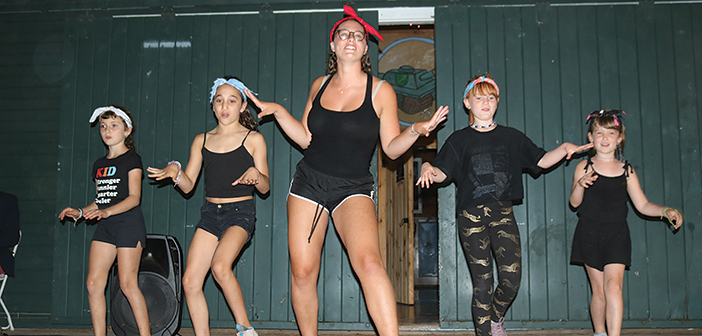
Campers participate in a talent show. Photo credit: Camp Wekeela
Keep in mind that testing is just one of many NPIs that can be employed as part of a Covid operating plan. Camps should not rely on testing alone as a prevention strategy.
“The idea is that every one of these NPIs has their limitations,” says Rosenberg, “but when they’re taken together consistently and diligently in a cohesive plan, that has proven to be successful.”
BE FLEXIBLE
For many camps, tradition runs deep. Summer 2020 required camps to take a close look at their traditions and figure out ways to adapt them in order to keep things safe while staying true to their camp philosophies. Doing so wasn’t always easy, yet many camps found that things they worried about before camp ended up not being a problem in the long run.
Connection over tradition. “We spoke to camp directors who said that if the kids had to wear masks that they weren’t running camp, because that’s not camp,” says Susie Lupert, executive director of ACA New York and New Jersey. “But the children were actually quite happy to wear masks if it meant they were allowed to do activities. The idea of socializing and having fun and being together outweighed almost all of the inconveniences that we thought were really big deals. I’m fairly certain those camp directors don’t feel that way anymore.”
So maybe color war won’t be as dramatic as it usually is. Maybe you don’t have off-campus trips or outside performers this year. Maybe traditional, whole-camp activities will have to be dialed back to include smaller groups instead.

Ephram Caflun shares Covid news with campers at Wekeela.
“It doesn’t matter if you don’t do the thing that you’ve traditionally done for 100 years,” says Blaisdell. “It’s being at camp and being together that makes camp, and the pandemic gave us an opportunity to really prove that.”
“At the end of the day, summer camp requires people to be adaptable and flexible—and that was true this past summer especially,” says Caflun. “The one thing I could tell you that we learned is that less is more, and kids just wanted to have fun.”
FUTURE FORECAST
The December approvals of coronavirus vaccines and the beginning of their distribution is encouraging, but there’s a long way to go before the pandemic is over. At press time, it’s still unclear what a vaccination timeline will look like for healthy kids. As a result, Covid prevention protocols are likely to remain in place for quite some time.
Still, the successes camps saw in 2020 are a strong indicator of what campers can look forward to in 2021.
“Here in the camp world, we’ve been talking a lot about the ‘culture of compliance,’” says Rosenberg. “We know from the data that we can do this. Everyone needs to work hard and pull together. And once that happens, it can be an amazing experience. Campers and staff will be talking about their Covid summers for the rest of their lives.”
Copeland agrees. “The silver lining is that camps are resourceful. Camp people know how to deal with challenges and pivot on a dime. Summer 2020 was a master class in flexibility and resourcefulness. When challenged, camps will come out on top.”


